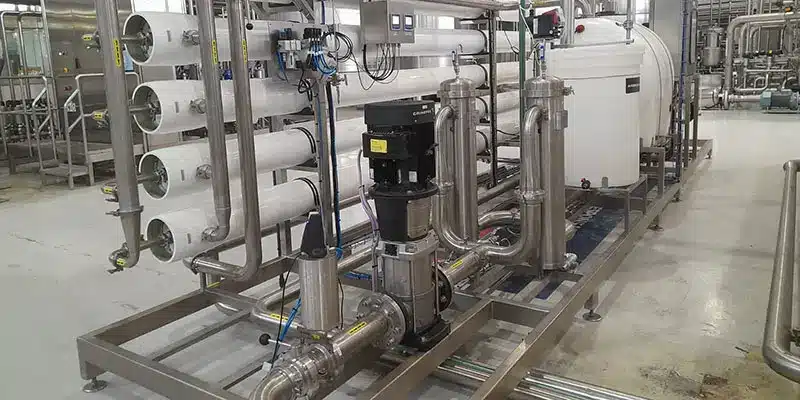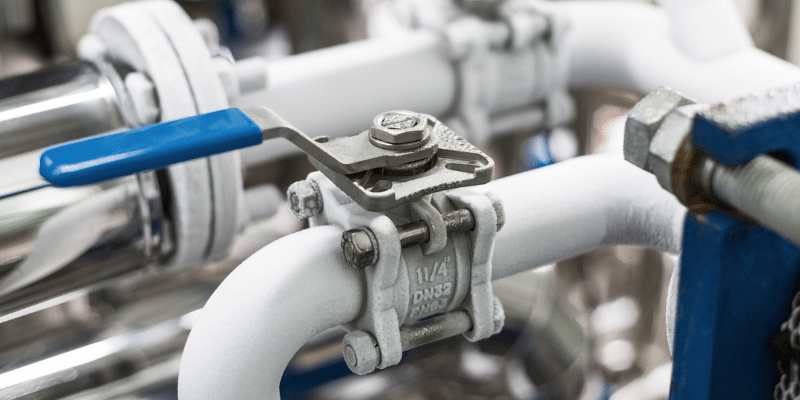Many industrial wastewater treatment facilities are now designing for reuse at the source, treating process water on-site so it can safely reenter production streams.
The focus is turning to systems that conserve, reuse, and account for every drop of water
In the world of wastewater treatment, one of the most visible shifts in 2025 has been the growing focus on wastewater reuse and circular water systems. Many facilities are now designing for reuse at the source, treating process water on-site so it can safely reenter production streams. This near-closed, or circular, approach reduces both discharge volumes and the consumption of fresh water, strengthening operational resilience and directly shrinking a facility’s overall water footprint.
Examples include breweries and food processors recycling process water, power plants reusing cooling water, and mining operations recovering part of their wastewater for further use. These strategies help industries move toward net-neutral or even net-positive water performance, demonstrating measurable reductions in total water withdrawal per unit of production.
Rising Importance of Water Footprint Accounting

Precision matters: Industries from food and beverage to chemicals are adopting detailed water footprint accounting to track use, losses, and reuse across every stage of production.
Beyond technical innovation, the concept of water footprinting — quantifying total water use, consumption, and impact across industrial operations — is becoming a critical benchmark. Companies are increasingly assessing direct (operational) and indirect (supply chain) water footprints to understand and minimize their dependence on scarce freshwater sources. Transparent measurement not only informs internal efficiency strategies but also strengthens corporate ESG disclosure, investor confidence, and community trust.
Regulation is tightening, and expectations are broadening. New discharge limits for contaminants such as PFAS, microplastics, and nutrients are raising the bar for treatment performance. Governments worldwide are expanding monitoring requirements, while investors and customers now expect clear reporting on water use and reuse performance. What was once a matter of compliance has become a proxy for environmental leadership, and the water footprint has emerged as a key ESG indicator for industrial resilience and reputational strength.
From Waste to Resource: Energy and Material Recovery
Another defining trend is the pursuit of energy and resource recovery from wastewater. Industrial effluents often contain valuable organic matter and trace minerals that can be repurposed. Anaerobic digestion, for instance, can convert high-strength wastewater into biogas, providing a renewable energy source for plant operations. In sectors such as mining and metal finishing, advanced recovery systems are being used to extract metals or salts from effluent, turning waste into usable materials.
These innovations not only reduce carbon footprints, but also cut the embedded water footprint of industrial production, since recovered water and materials offset the need for new extraction and treatment.
The rise of modular and decentralized wastewater treatment systems is also reshaping industrial strategy. Traditional centralized models, which require extensive infrastructure and long permitting timelines, are often impractical for smaller or remote facilities. Modular, pre-engineered systems that are containerized can be deployed quickly, scaled with demand, and operated near the point of generation.
This flexibility supports localized water reuse and footprint reduction, allowing facilities to treat and recycle process water without relying on municipal systems or long-distance water transfers.
Digitalization: Tracking and Optimizing the Water Footprint
Digitalization is connecting these developments. Artificial intelligence, IoT sensors, and digital twins are transforming how wastewater treatment systems are monitored and controlled. Real-time analytics allow operators to optimize aeration, dosing, and filtration cycles, reducing energy and chemical consumption while maintaining consistent effluent quality.
These tools also enable real-time tracking of water footprint metrics such as the volume of water withdrawn, reused, and discharged, allowing companies to quantify water circularity and identify hotspots for improvement. Predictive maintenance further enhances reliability, creating a data-driven approach to water stewardship.
From Compliance to Value Creation
For decades, industrial wastewater management was defined by reaction: meet discharge standards and move on. In 2025, that paradigm is being replaced by a proactive mindset that views wastewater as a strategic resource and a central component of water footprint reduction:
- Reuse reduces dependence on external sources
- Energy recovery offsets utility costs
- Circular practices align with corporate sustainability commitments
This redefinition turns wastewater from a liability into an opportunity. Companies that approach wastewater treatment as an integrated part of production, rather than as a separate regulatory function, are finding both financial and environmental returns, including measurable reductions in total water intensity.
Global Perspectives: Different Drivers, Common Direction
The global shift toward circular wastewater management is taking shape in different ways across regions, but with the same underlying goals: lower water footprints and improved resource efficiency.
- Europe continues to lead with strong policy frameworks driving energy-positive treatment and nutrient recovery.
- In the Middle East, where water scarcity is acute, modular reuse systems are proving critical for reducing industrial dependence on freshwater imports.
- Across Asia-Pacific, rapid industrial growth is being matched by stricter enforcement of water use standards and adoption of advanced reuse technologies.
- North America is seeing a convergence of sustainability and operational efficiency, with digital tools helping industries measure and manage their water footprints in real time.
Despite regional differences, the trajectory is shared: Industrial wastewater is no longer waste; it’s a measurable resource at the heart of water footprint reduction.
Technologies Powering the Shift

Advanced treatment technologies — including RO, ultrafiltration, MABR, and oxidation — are enabling high-quality effluent suitable for safe, reliable industrial reuse.
Both established and emerging technologies are enabling this transformation. Membrane bioreactors, ultrafiltration, advanced oxidation, and electrochemical systems are delivering higher-quality effluent suitable for reuse. Anaerobic and biological processes are capturing energy, while modular, containerized units make deployment faster and more adaptable.
As automation and AI-based controls become standard, they enable continuous improvement in water footprint performance, ensuring every liter is tracked, reused, and optimized.
Looking Ahead: Building a Circular Water Future
By the end of this decade, water footprint reduction will be as central to industrial sustainability as energy and emissions. Facilities are expected to reuse more water, discharge less, and recover greater value from their wastewater streams than ever before.
Water performance will become a core operational metric, embedded in corporate dashboards and ESG reporting. The challenge ahead lies in scaling these practices and sharing insights across industries. Collaboration among technology developers, regulators, and operators will determine how quickly industries can transition from compliance-driven treatment to circular, low-footprint water management.
Industrial wastewater treatment in 2025 is no longer about simply meeting standards. It is about designing systems that conserve, reuse, and account for every drop. This evolution marks a fundamental shift toward a more resilient, transparent, and water-efficient industrial future. Contact Fluence to explore a modular, low-footprint solution built for your industry.

